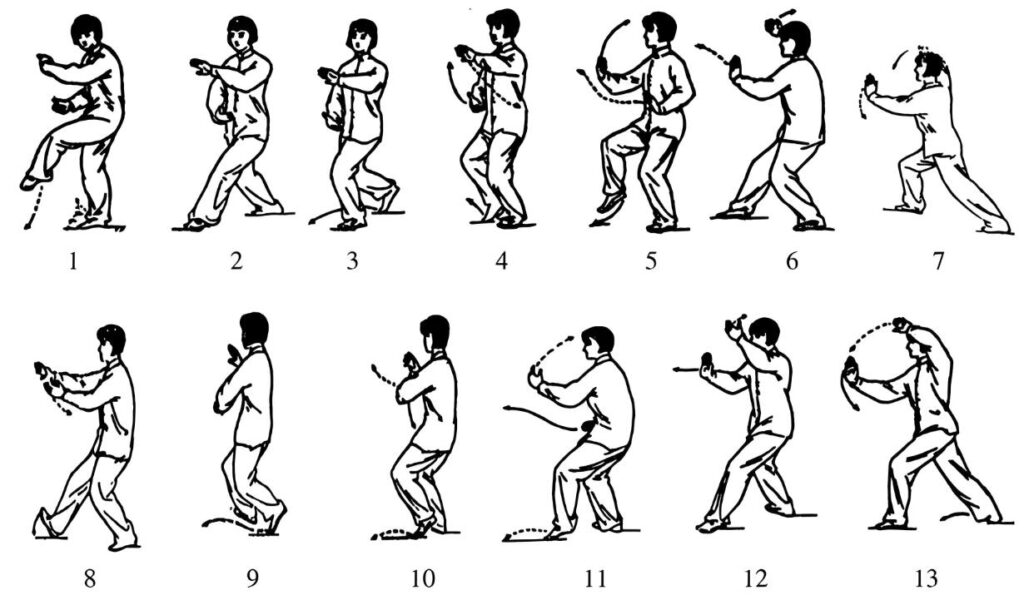
24 Form Tai Chi, also known as simplified Tai Chi, was organized by the State Sports Commission of China (now the General Administration of Sport of China) in 1956 to draw on the essence of Yang-style Tai Chi and compile it. Although it only has 24 movements, compared with traditional Tai Chi routines, its content is more refined, the movements are more standardized, and it can fully reflect the movement characteristics of Tai Chi.
The following are the precautions for practice.
1, Calm your mind and relax your body.
The so-called “calm mind” means that when practicing Tai Chi, you should eliminate all distractions and not be disturbed by the outside world; the so-called “relaxed body” does not mean that the whole body is relaxed and tired, but that on the basis of maintaining the correct body posture during practice, consciously relax the joints, muscles and internal organs of the whole body to the maximum extent.
2, Round and coherent.
“Calm your mind and relax your body” is the basic requirement for practicing Tai Chi, and whether it is “round and coherent” is the main basis for measuring the depth of a person’s kung fu. The “coherence” required in Tai Chi practice refers to many aspects: the first is the coherence of the limbs, that is, the so-called “joint penetration”. The coherence of the limbs is based on the waist. In the process of movement conversion, it is required that: for the lower limbs, the waist leads the hips, the hips lead the knees, and the knees lead the feet; for the upper limbs, the waist leads the back, the back leads the shoulders, the shoulders lead the elbows, and the elbows lead the hands. The second is the connection between movements, that is, “the movements are connected”, the end of the previous movement is the beginning of the next movement, and there is no interruption or pause between the movements. “Roundness” is a further requirement based on coherence, which means being smooth and natural.
3, Clear distinction between virtual and real
To achieve “movement like drawing silk, walking like a cat”, first of all, we must pay attention to the appropriate transformation of virtual and real, so that there is no instability in the movement of each part of the limbs. If we cannot maintain balance and stability, there is no such thing as “walking like a cat”. Generally speaking, the lower limbs are mainly supported by the legs, and the legs that assist in supporting or changing steps are virtual; the upper limbs are mainly embodied by the arms, and the arms that assist in coordination are virtual. In short, the virtual and the real should not only penetrate each other, but also change flexibly under the guidance of consciousness.
4, Breathe naturally
The breathing methods of Tai Chi practice include natural breathing, abdominal forward breathing, abdominal reverse breathing and fist breathing. No matter which of the above breathing methods is used, it should be natural, even, and slow, and should be naturally coordinated with the movements. Beginners should use natural breathing.
